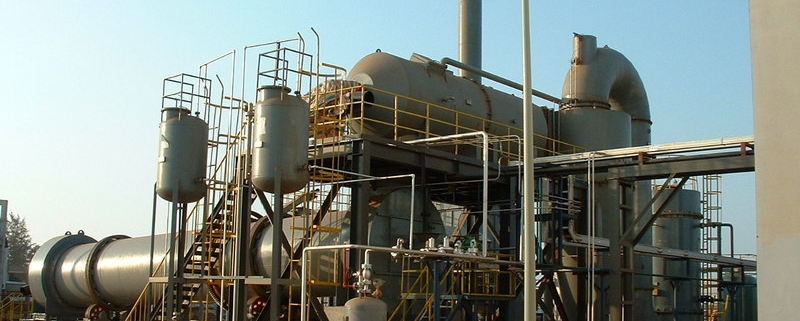The so-called sludge carbonization is a process that releases the water in the sludge by a certain means, while maximally retaining the carbon value in the sludge, so that the carbon content in the final product is greatly increased. There are four main types of sludge carbonization.
1.High temperature carbonization.
It is not pressurized when carbonized, and the temperature is 649-982 °C. The sludge is first dried to a moisture content of about 30%, and then enters the carbonization furnace for high temperature carbonization granulation. Carbonized particles can be used as low-grade fuels with a calorific value of about 8 360-12 540 kJ/kg (Japan or the United States). The technology can realize the reduction and resource utilization of sludge. However, due to its complicated technology, high operating cost and low calorific value in the product, it has not been applied on a large scale at present, and the largest scale is 30 dehumidified sludge.
2.Medium temperature carbonization.
It is not pressurized when carbonized, and the temperature is 426~537 °C. The sludge is first dried to a moisture content of about 90% and then decomposed into a carbonization furnace. Oil, reaction water (steam condensate), biogas (uncondensed air) and solid carbides are produced in the process. In addition, the technology is to carbonize the sludge after drying, and its economic benefits are not obvious. There is no other potential users except for one Australian processing plant.
3.Low temperature carbonization.
It does not need to be dried before carbonization, and is pressurized to 6~8 MPa during carbonization. The carbonization temperature is 315 °C. The carbonized sludge is liquid, and the water content after dehydration is less than 50%. It can be used as a low-grade fuel after drying and granulation. Its calorific value is about 15048 ~ 20482 kJ / kg (United States). The technology removes all the biomass in the sludge by heating and pressurizing, and only 75% of the sludge in the sludge can be removed by mechanical means, which greatly saves energy consumption during operation. The complete cracking of the sludge ensures complete stabilization of the sludge. In the sludge carbonization process, the calorific value of most of the sludge is retained, which creates a condition for energy reuse after cracking 14t.
4.Sludge hydrolysis and thermal drying technology.
Sludge hydrothermal drying technology can improve the dewatering performance and anaerobic digestion performance by heating the sludge and hydrolyzing the viscous organic matter in the sludge under a certain temperature and pressure to destroy the colloidal structure of the sludge. As the temperature and pressure of the hydrothermal reaction increase, the particle collision increases, and the collision between the particles causes the destruction of the colloidal structure, which separates the bound water from the solid particles. The water content of the hydrothermally treated sludge in mechanical dewatering without the addition of flocculant is greatly reduced.
The hydrolysis of sludge macroscopically shows a decrease in the concentration of volatile suspended solids and an increase in the concentrations of COD, BOD and ammonia nitrogen. The hydrothermal drying technology adopts a slurry reactor, which improves the processing efficiency of the system by flashing exhaust steam premixing preheating slurry, steam and mechanical co-stirring; in the hydrothermal reactor, direct mixing and heating by steam reverse flow The method enhances the mass transfer heat transfer process and avoids localized superheated coking carbonization: in the continuous flash reactor, effective recovery of system energy is achieved.



